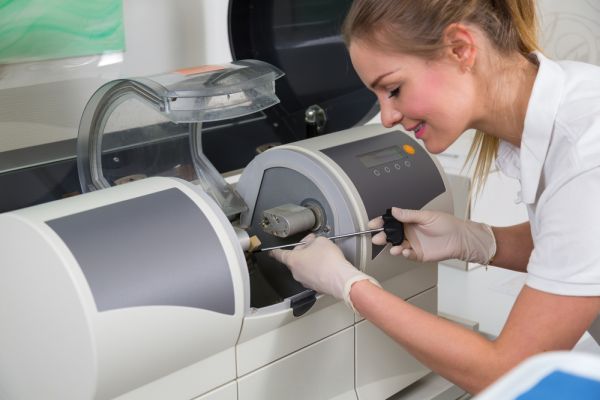Why Do I Need a Crown on My Tooth After a Root Canal?

When a root canal is essential to preserve your teeth and oral health, your dentist has the knowledge and tools to help. This multi-step process can take place over two or three appointments. Still, the procedure should be mostly pain-free and comfortable. Your dentist will work hard to do an effective job of making it as pleasant an experience as possible. The more you understand about the process, the more likely you are to feel at ease.
Symptoms that show endodontic treatment is necessary
Many dental patients are familiar with the process of getting a cavity and what leads to this decay. There are some similar signs that would point to needing this procedure as well. A root canal will clean out severe decay and infection in the pulp chamber of the tooth. It can be helpful for people to know the symptoms of these issues. Some of these may include:
- Sensitivity to hot or cold, even after the sensation has been taken away
- Pain while chewing
- Severe, persistent toothache
- Inflamed, tender gums
- Chipped or cracked teeth
Consequences of waiting
For patients who feel these effects, it is not a wise idea to put off calling a dentist for an appointment. Procrastinating endodontic treatment can lead to more significant health issues. The infection can spread through the tooth and to neighboring teeth. Eventually, the infection could go into the jaw and cause swelling in the face. These problems could develop other health conditions throughout the body if people do not act quickly and get the help they need.
How the dentist does the root canal
After diagnosing the infection and decay with the help of an examination and X-ray, the dentist will prepare the patient for the procedure. The dentist will numb the affected area with a local anesthetic. Next, the dentist will drill into the tooth and remove the pulp chamber. Then, the root canal professional will clean out and disinfect the area to prevent the infection from spreading. Lastly, the dentist will seal the tooth.
Including a crown
The last step of the process may include placing a crown on the tooth, though not all dentists do this. When a crown is used, it may be part of a subsequent appointment. The dentist will place a crown on the tooth if there has been damage. This will preserve the integrity and keep it strong. Often, the infection can cause fractures or cracks. The crown will help keep the tooth looking natural and functioning properly. The dentist will make sure the crown looks as close in color and appearance to the natural teeth around it.
Be proactive
It may tempt you to put off making an appointment with your dentist for endodontic work. Do not let the horror stories scare you away from coming into the office. This procedure can help preserve your teeth, take away the pain and improve your oral wellness. Call your dentist today and discuss your concerns so you can get into the office for this important treatment.
Request an appointment here: http://www.drericjohnson.com or call Dr. Eric Johnson at (949) 205-1139 for an appointment in our San Clemente office.
Check out what others are saying about our services on Yelp: Read our Yelp reviews.
Recent Posts
Laser dentistry is a modern practice used for a number of dental procedures, ranging from root canals to oral cancer screenings. One of the most common laser dentistry procedures is gum reshaping, which has grown in popularity for both cosmetic and restorative purposes. When gum reshaping is chosen for cosmetic purposes, patients are typically hoping…
Disorder of the temporomandibular joint, or TMJ, is a condition that can cause difficulty with jaw functions. The disorder can cause jaw pain that restricts how you open and close your mouth. You might notice clicking sounds or jaw locking when eating, talking or yawning. Continue reading to learn more about the symptoms, diagnosis and…
It is easy to assume all gum disease is the result of poor oral hygiene. In many cases, it is. However, red or swollen gums can also be an indication of other health concerns completely unrelated to oral care. Because these conditions can be serious, it is important to pay attention to any changes or…
The American Academy of Pediatric Dentistry recommends taking your child to a dentist for kids before their first birthday. These early dental appointments play a crucial role in ensuring that your child’s teeth develop properly and stay healthy. They also help normalize the concepts of going to the dentist and of oral hygiene. Children who…


